#plugin architecture
Explore tagged Tumblr posts
Text

What is a stone in Construction?
In the field of construction, the term stone typically refers to any natural, solid, and hard substance that is mined or quarried from the earth and can be used in construction. Stones can be used for a variety of purposes, including building foundations, walls, flooring, and decorative features.
Each kind of stone has distinct qualities that make it appropriate for various construction uses. For instance, marble is appreciated for its aesthetic appeal whereas granite is renowned for its sturdiness and resistance to weathering.
In addition to their physical properties, stones can also be categorized by their shape and size. For instance, fieldstones are uncut stones found in fields or on the surface of the ground, while rubble stones are irregularly shaped pieces of stone used in the construction of walls and foundations.
Overall, because of their strength, adaptability, and durability, stones are are a crucial element in the construction sector.
Read more
0 notes
Text
https://www.adsthumb.com/revit-plugin-enhancing-workflow-efficiency-and-accuracy-in-bim-projects-977201
Revit Plugin: Enhancing Workflow Efficiency and Accuracy in BIM Projects
A Revit Plugin fundamentally enhances Autodesk Revit's operational parameters to facilitate task completion and improve design workflow processes. Such plugins are best suited for architects, engineers, and construction professionals; with features including advanced modeling tools, automations, data management, and software integrations. Be it optimizing schedules, creating 3D details, or performing energy analysis, a Revit plugin savors the benefits of time and accuracy. With a massive range of both free and premium options available, choosing the right Revit plugin could become a massive plus for productivity and project performance. Unlock the entire BIM capability with intelligent plugin solutions. For More Information Call: +1 888 662 7238 Or VisitUs:https://ideatesoftware.com/
#Revit Tool#Revit Plugin#Revit Add Ins#Revit Architecture Plugins#Revit Addons#Revit Add On#Revit Addin#Addin Revit#Revit Addins#Revit Plugins#Plugins Revit#Top Revit Plugins
0 notes
Text
0 notes
Text
Popular Autodesk Revit Addins
With a history of developing Revit Addins that goes back to 2009, Ideate Software has a proven record of addressing real issues experienced by real Revit users. In addition to working tirelessly to ensure our products work as promised, we work hard to ensure they are easy to access, install, learn, and use. One way we do help interested parties find and try them is by making them all available at the Autodesk App Store.
Ideate Software on the Autodesk App Store
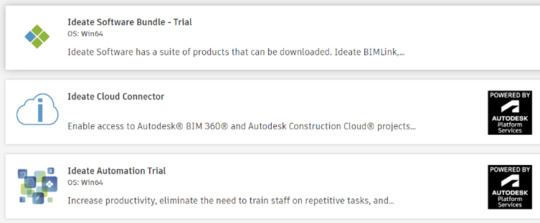
Autodesk App Store is an online marketplace provided by Autodesk where users of its products can, among other things, find and download third-party addins. As an Autodesk Authorized Developer, we make all our products available on the site, including our five Autodesk Revit addins, presented as a trial bundle. We also make available our desktop solution for automating Revit tasks, Ideate Automation, as well as our Cloud Connector to the Autodesk BIM360/ACC environment. You can access the Ideate Automation trial on the Autodesk App store page.
Keeping with our promise to make it easy for people to use our products, as we have expanded our presence around the world, we have also increased the number of languages in which we deliver our information. That includes the way in which we present our information on the Autodesk App Store. As of today, on the App Store, you can find information about Ideate Software products in English, German, Spanish, French, Chinese (simplified), Japanese, and Korean.
To check out our products on the App store, we recommend that you go to the Ideate Software Bundle – Trial page. From there, you will get:
Brief descriptions of all our Autodesk Revit addins. (Note: This page does not include information about Ideate Automation, which is our scripting solutions that runs time-consuming Revit tasks in the background. Find information on Ideate Automation):
Ideate BIMLink – Use it to push volumes of information from a Revit file into Microsoft Excel for easy editing, and then pull the updated information back into Revit with speed, ease, and accuracy.
Ideate Explorer – Get lightning-fast data discovery and manipulation features through its easy and intuitive way to search, filter, quantify and select elements in a Revit model.
Ideate Sticky – Elegantly link and easily update non-BIM data into a Revit project from Excel to Revit, Word to Revit, or PDF to Revit.
Ideate StyleManager –Addresses the challenges of unorganized and duplicate Revit styles that can cause publishing errors, end-user confusion, and even performance issues.
IdeateApps – Streamlines common Revit tasks through set of applications that increase the productivity and efficiency of the entire project team. The IdeateApps collection includes Ideate Renumber, Ideate QuickSelect, Ideate SmartDelete, Ideate XRay, Ideate SpellCheck, Ideate Annotate, Ideate SheetManager, Ideate Clone, Ideate Align, and Ideate ViewCreator.
2. A Description of the Trials
No cost
30-days
Includes access to each of the five products. Ideate BIMLink, Ideate Explorer, IdeateApps, Ideate StyleManager, and Ideate Sticky
All are full functioning, except:
Ideate BIMLink has a 25-row limit to the data export
Ideate StyleManager is limited to testing these three styles: Line Patterns, Materials, and Material Appearance Asset styles
3. Access to the Getting Started Guides for each of the five products included in the bundle. Click the link to “Read Help Document” to get to these guides.
4. Links to Videos - As of the date of the publishing of this document, we had links to these videos on the site:
Clients Discuss Ideate Software Solutions for Revit
youtube
What’s New in Ideate Software – May 2023 Release
Ideate Explorer Overview
Introduction to Ideate Sticky
Why Ideate StyleManager for Revit
Introduction to IdeateApps
Ideate BIMLink – Overview on Data Management
Customer 5-Star Reviews

Titles include:
“Autodesk, Take Note”
“Can’t Revit Without It”
“Productivity Tools that Deliver on the Promise”
“Essential for Every Revit User”
Stay Connected
Want to learn more about our top Revit plugins? Visit our website.
You can also check us out and follow us on X/Twitter, LinkedIn, Facebook, YouTube, and Instagram.
If you have any questions, reach out to us. We are here to help you understand and use our Revit plugin solutions.
Browse our website to learn more about how Ideate Software tools help Revit users save time, increase model accuracy, improve deliverables, and elevate design. You can give them a try by downloading trial versions or purchasing the bundle for access to our addins for Revit, which includes Ideate BIMLink, Ideate Explorer, Ideate Sticky, Ideate StyleManager, and IdeateApps for six months. You can also get a free trial of Ideate Automation to experience how it can help you automate BIM tasks.
#Revit Plugins Solutions#Revit Tool#Revit Plugin#Revit Add Ins#Revit Architecture Plugins#Revit Addons#Revit Add On#Revit Addin#Autodesk Revit Addons#Addin Revit#Revit Addon#Revit Addins#Addins Revit#Revit Software Plugins#Revit Plugins#Addins For Revit#Plugins Revit#Autodesk Revit Plugin#Autodesk Revit Addins#Top Revit Plugins#Revit Plugin Download#Youtube
1 note
·
View note
Text
An Ode to Hello Dolly with Matt Mullenweg
New Post has been published on https://thedigitalinsider.com/an-ode-to-hello-dolly-with-matt-mullenweg/
An Ode to Hello Dolly with Matt Mullenweg


WordPress has been around for over 20 years. Part of its continuing popularity stems from how extensible it is. A skilled developer can make the content management system (CMS) do just about anything.
Its plugin architecture powers shopping carts, forms, and photo galleries. That’s just the tip of the iceberg, though. Niche functionality abounds, so it’s no wonder it leads the pack in market share.
But let’s take a step back. The ability to use plugins came about in WordPress 1.2. It was a new concept in those days. The project needed to educate developers on how things work. To encourage them to build and experiment. But how?
Well, hello, Dolly! Or, if you prefer more formality, Hello Dolly.
It’s one of two default plugins that come with each installation of WordPress. Maybe you delete it. Perhaps you leave it deactivated in your plugins folder. But do you know about its roots as a teaching tool?
In case you didn’t know: “Hello Dolly” is also a song made famous by Louis Armstrong. The jazz legend was a perfect fit for this project. WordPress releases are named for famous musicians. So, “Satchmo” gets some glory here. The plugin shows a random line from the song’s lyrics in the WordPress dashboard.
Love it or not, Hello Dolly (the plugin) has a purpose and is here to stay. I spoke to someone who knows a thing or two about the subject.
[embedded content]
Why Matt Mullenweg Is Still Jazzed Up
WordPress co-founder Matt Mullenweg is a big fan of jazz. He also developed Hello Dolly. Matt was kind enough to take a quick trip down memory lane with me.
Besides sharing a classic song, what was the inspiration for creating Hello Dolly?
Matt Mullenweg: We wanted to riff on the “Hello World” that sits at the inception of many people’s introduction to programming. We felt like actions and hooks were a really nice paradigm alternative to purely object-based extending of applications.
Why has it continued to be a part of every new WordPress install?
MM: Because it’s nice to have a plugin with every install, and it’s funny and weird.
The plugin’s inclusion has resulted in some 1-star reviews. Does that keep you up at night?
Matt Mullenweg: Not at all.
Do you foresee a time when the plugin might evolve? For example, a Hello Dolly block might be a nice introduction to block development.
Matt Mullenweg: I think it would be cool if Hello Dolly could connect people to live jazz happening near them.
According to its development log, Hello Dolly has been around for 16 years and has over 700k active installs. Does that make you think about how far WordPress has come?
Matt Mullenweg: It shows that even though Hello Dolly is silly and simple, a pretty significant number of people appreciate the little bit of joy and randomness it introduces into their day.
” This is not just a plugin, it symbolizes the hope and enthusiasm of an entire generation summed up in two words sung most famously by Louis Armstrong: Hello, Dolly.” – Hello Dolly plugin description from WordPress.org
A Living Connection to the Early Days of WordPress
Hello Dolly is a bit silly on the surface. However, it also represents something bigger.
Consider the importance of plugins to the WordPress ecosystem. Where would the CMS be without the likes of WooCommerce or Yoast SEO? What about the tens of thousands of plugins at our fingertips?
Every developer has to start somewhere. Some may have used Hello Dolly to take that first plunge into development. And people interested in building plugins can still use its code as a resource.
The plugin has played a role, however small, in the growth of WordPress. We owe it some thanks. Having said that…
Dolly, never go away, promise, you’ll never go away!
Thanks to Matt Mullenweg for chatting with me! Find more from Matt on his blog.
Related Topics
Top
#applications#architecture#Blog#Building#CMS#code#content#dashboard#delete#Design#Developer#developers#development#Forms#Funny#growth#how#iceberg#inclusion#Inspiration#Interviews#it#management#memory#One#photo#plugins#programming#project#Reviews
0 notes
Text
nCircle Tech's Revit Architecture Plugins Can Help You Improve Your Designs
In the fast-paced world of architecture and design, efficiency and precision are paramount. nCircle Tech's Revit Architecture Plugins are here to transform your design workflow, enabling you to create more accurate, innovative, and efficient architectural designs. These plugins are meticulously crafted to integrate seamlessly with Revit, providing a range of tools and functionalities that enhance your design capabilities.
Streamline Your Workflow
One of the significant advantages of nCircle Tech's Revit plugins is their ability to streamline your workflow. By automating repetitive tasks and providing intuitive design tools, these plugins save you valuable time. This allows you to focus more on the creative aspects of your projects rather than getting bogged down by mundane tasks. Whether it's automating data entry, simplifying complex modeling tasks, or enhancing collaboration, these plugins ensure that your workflow is smooth and efficient.
Enhance Design Accuracy
Accuracy is critical in architectural design, and nCircle Tech's plugins help you achieve it effortlessly. These tools offer advanced features for precise measurements, accurate modeling, and detailed documentation. With enhanced accuracy, you can minimize errors, reduce rework, and ensure that your designs meet the highest standards of quality. The plugins also provide robust error-checking mechanisms, ensuring that potential issues are identified and resolved early in the design process.
Foster Innovation
Innovation is at the heart of architectural excellence, and nCircle Tech's Revit plugins empower you to push the boundaries of creativity. With a suite of tools designed to facilitate complex design tasks, you can explore new architectural forms and concepts. The plugins support advanced parametric design, enabling you to create intricate and dynamic structures with ease. This fosters a culture of innovation, allowing you to deliver groundbreaking designs that stand out in the industry.
Conclusion
nCircle Tech's Revit Architecture Plugins are essential tools for any architect looking to improve their design process. By streamlining workflows, enhancing accuracy, and fostering innovation, these plugins help you deliver superior architectural designs. Embrace the power of nCircle Tech's plugins and take your architectural projects to new heights of excellence.
0 notes
Text
Even though Sketchup is a very capable tool for architectural visualisations, it lacks some elements that may be utilized to reduce modelling time. The reason for this is that the software is all-purpose rather than specifically architectural. By adding plugins to SketchUp we can work in a more precise way and also achieve faster modeling times.
Given below is the list of some of the most important plugins that you can use in SketchUp:
1001bit Tools – Helps Modelling Architecture
The 1001bit tool is a SketchUp plugin that is a must-have. Several architectural elements can be created using this tool as it works as a collection of tools. The architectural elements range from roofs to railings, windows, staircases, and roof design. This plugin provides some tools which can be used for drawing/editing geometry such as fillet, extend and chamfer which are missing in the native Sketchup.
After the installation of the plugin, SketchUp can take time to open as it takes time to load the plugin. The reason why it takes time to load is that it checks the license status before loading. The basic tools of 1001bit are the ones regarding distance which includes Information Between 2 Points, Point on Face, Center Point of Arc, and Circles.
Read more
1 note
·
View note
Text
In addition to being used in architecture, SketchUp is widely used for the reason of its simplicity. Architectural design can also be limited by its simplicity.
1. V-Ray
It enhances SketchUp's rendering tools and provides better lighting tools, allowing complex scenes to be created and visualized more easily.
2. SketchUp BIM
With SketchUp BIM, you can make building models faster by converting SketchUp into BIM software.
Read more
0 notes
Note
i MUST hear more about this very normal and completely functional minecraft server. please spill more details
Before the last world reset, there was a region a few hundred blocks across which was permanently lit as though it were noon 24 hours a day, because one of the admins replaced every air block with an invisible level 15 light block. Directly next to this was a former ocean that got turned into a vast plain of packed ice stretching in every direction; you could stand in the middle of it and it would be indistinguishable from superflat.
On that old world, the market next to spawn had about a 50% chance of completely locking up my game any time I went there, and the only way to fix it was to go into Task Manager and force-crash Minecraft. Nobody else ever had this issue, and to this day I do not know what caused it.
There was an entirely separate world containing a single castle, which you could only get to if the owner of the castle teleported you in there. The castle was supposed to be surrounded by an inescapable dome of barrier blocks, but I managed to get out and explore the rest of the world. At 0,0 there was a village that had generated in a massive pit, a hundred blocks across and stretching nearly to bedrock. Immediately next to this pit was a frozen river bearing the shatter pattern of some kind of large explosion, set off by forces unknown.
Someone built an outpost one million blocks away from spawn. Those chunks got culled at some point, and when the player who built it went back there they found a completely different landscape generated in its place. There was never an update that changed terrain generation during that world's run.
Recently, the functionality of rails got completely inverted. Unpowered rails would accelerate a minecart, while powered ones would stop it in its tracks. This, at least, was just an issue with one plugin being configured wrong. Sometimes there are issues where multiple plugins exist alongside each other fight for dominance.
We have one plugin that allows some players to fly and resist all fall damage without elytra or equipment, and another plugin that (until recently) was configured to block the first plugin from functioning whenever you were in another player's land claim. This led to situations where you could fly into an invisible claim region and instantly drop out of the sky and die. I have died seven times on this world, and all of them were because of this.
There is an obsidian sphere about a hundred blocks across, mostly submerged in the ocean; elsewhere, there is an island of comparable size which is covered entirely in basalt; and elsewhere still, there is a region of forest that has been fully replaced with sculk. I know this because I am currently making a map of the server covering around 12000x12000 blocks, and all those places just show up as mysterious, cursed splotches of black.
There is a lot of lore and roleplaying. The Queen is both fae and vampiric; my queries as to how precisely a diet of blood is reconciled with an iron allergy have gone largely unanswered. She has also canonically destroyed and remade the entire world on two separate occasions. The server has only undergone one world reset.
Immediately before said reset, I wrote a 70-page book filled with footnote labyrinths, in which my character briefly goes on an anti-capitalist rant before discussing the architectural styling of his home and the impending obliteration thereof. It serves as a spiritual sequel to a 100-page book which is ostensibly a user manual for installing an item sorter, but which also contains the lyrics to Mr Blue Sky and mentions something called the "City of Ouranos Department for Bibliographical Metaphysics and Chilled Legumes" (which is a reference to a different server I used to play on, in which a "Cool Bean War" was instigated with the help of a book that would crash your game if you tried to read past the first page).
The item sorter that the aforementioned user manual is for is a colossal assemblage of redstone components that click and flash for several minutes every time you put anything into it. I never actually built this on the server, because I ended up making a much simpler design using a custom plugin called SlimeFun (which tries to emulate the functionality of a tech mod without actually being one). This plugin's cargo management system does not contain a priority allocation mechanism, so I ended up implementing one by forcing the lower-priority route through a very long cargo pipe that eventually loops back on itself and ends at an overflow chest a few blocks from the starting point, thereby tricking SlimeFun's pathfinding algorithm into only sending items through it if every other option has been exhausted.
A reincarnation of Herb the Herbalist, the bizarre glitchy NPC entity that @the-unseelie-court-official has discussed at length, now resides in a hole directly under world spawn, repeating the same six lines of dialogue on a loop for all eternity:
I once was free, you know? There was a time when the Queen almost came toppling around me. Like a puppet with no strings I could not move nor speak, but I was free. It was stripped from me. Even now I dance her tune, only speaking of this past because she lets me. I crave nothing more than death. Please, unjust unmerciful God who would leave me to survive.
So, y'know, they're doing fine.
143 notes
·
View notes
Text

On Pinterest: An ongoing series of Black and White photos exploring the shapes and patterns of urban architecture in Toronto Canada. West wall of No 156 Front St W. Original photography using a Canon EOS 60D body with a Canon EF 24-105mm f/4L IS USM lens and Silver EFEX Pro as a Lightroom plugin for the Black and White conversion. • 230gsm Premium Matte Photo Paper • Acid Free Hot Press 100% Cotton Rag Inkjet Printing • Ready To frame https://www.pinterest.com/pin/64668944645492161/?utm_source=dlvr.it&utm_medium=tumblr
20 notes
·
View notes
Text
Flex Tools allows architects and 3D artists too quickly and easily create doors, windows, stairs, and other architectural features within SketchUp.
Features of Flex Tools
Fully Parametric
Changes can be made very quickly and easily since components are fully parametric. Flex Tools integrates well into the interactive design process.
Instant Elevations & Plans
A few clicks and it's ready for layout.
Responsiveness
Scale components fit perfectly. They maintain the proper proportions and parameters.
Customization
It is possible to adjust every element of the components. This allows for quick exploration of new design possibilities.
Section Fills
SketchUp section fills are fully compatible with this plugin.
Wall Cutter
With dynamic openings that readjust automatically, instantly cut through multiple layers of walls. You can turn any SketchUp component into a wall-cutter.
Read more
0 notes
Text
https://www.adsthumb.com/revit-add-on-sophisticated-tools-to-enrich-your-bim-workflow-977150
Revit Add-On: Sophisticated Tools to Enrich Your BIM Workflow
Revit Add On incrementally empowers Autodesk Revit by offering specialized tools, features, and functionalities that improve productivity, and design accuracy. From automating highly repetitive tasks to advanced modeling ability, these add-ons are meant for architects, engineers, and designers who want to ease their BIM workflows. Whether it is advanced scheduling, clash detection, custom family creation, or software integrations, there is always a Revit add-on that meets your needs. With free and premium tools, these apps save you time, diminish errors, and enhance efficiency. Check out the best Revit add-ons for your immediate project delivery needs. For More Information Call: +1 888 662 7238 Or VisitUs:https://ideatesoftware.com/
#Revit Tool#Revit Plugin#Revit Add Ins#Revit Architecture Plugins#Revit Addons#Revit Add On#Revit Addin#Addin Revit#Revit Addins#Revit Plugins#Plugins Revit#Top Revit Plugins
0 notes
Text
#Serverless Application Developlment#Serverless Application#serverless architecture#serverless-framework#serverless-cache#serverless-function#serverless-tools#Serverless Framework Plugin
0 notes
Text






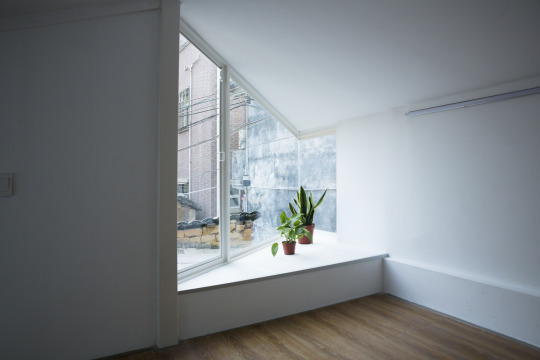
Shangwei Village Plugin House, China - People's Architecture Office
https://www.peoples-architecture.com/pao/en/
#People's Architecture Office#architecture#design#building#modern architecture#interiors#minimal#house#house design#tiny house#infill#urban#small home#parasite#courtyard#skylight#old and new#alleyway#china#chinese architecture
147 notes
·
View notes
Text

Play.CivMC.net
Version: Java 1.20.1
CivMC is a geopolitical Minecraft server focused on civilization-building. Players form nations and establish governments, wars occur, and treaties are signed. You can play with friends, punish your ideological enemies, or raid and attack indiscriminately. All interactions and laws are player enforced, with the help of plugins that have defined the genre since it's inception as CivCraft. You can view the player run wiki here, the player run map (with rail lines, nation borders, ect) here, and the player run newsletter here. The wiki also contains a New Player Guide! Every new player gets one free teleport within 24 hours of joining, make it count! Basic information under the cut.
The primary plugins used on CivMC to make it unique are NameLayer, Citadel, and Exile Pearl. FactoryMod also deserves a mention here.
Exile Pearl is arguably the most interesting mechanic, which allows you to kill another player with an Ender Pearl on your hotbar. This will imprison said player in the Nether, and also imposes restrictions on their gameplay. Pearls degrade however, and player "Essence" is required to keep them fueled. Essence is granted on a daily basis to players after being online for 30 minutes. Requiring a somewhat active nation to keep others imprisoned. Pearled players are kept in vaults, disgustingly large and complex obsidian structures meant to have maximum security.
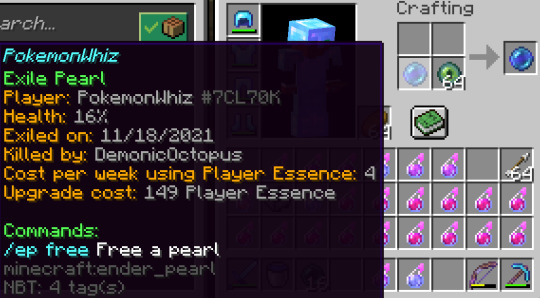

NameLayer acts as the base structure for many other plugins on the server. It allows players to make groups, with different ranks in said group having more, or fewer, permissions within a group. Such as who can buy from your shops, open doors and chests, or who can chat in said group. This last one is important, as the default chat range is only 1000 blocks. However there is a public global chat, just type "/global" after joining to participate, and "/local" to revert back.
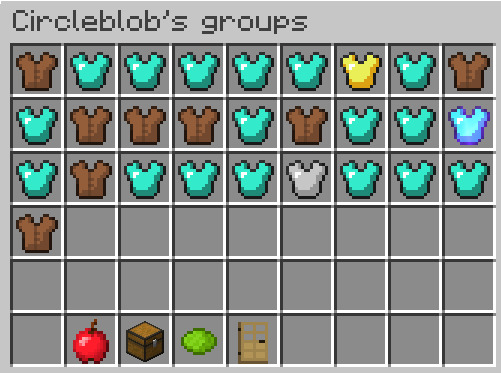
Citadel is a reinforcement plugin that will make your chests harder for nefarious actors to break into, your buildings more resilient to attacks, and allows you more peace of mind during your off hours. Individual blocks, chests, doors, etc can be locked with reinforcement materials. Each material requires a set number of breaks before the block will drop. Stone is 50, iron ingots are 300, and diamonds are 2000. Virtually every build in the game is reinforced with stone, more expensive materials are reserved for more important things, like chests. NameLayer hooks into Citadel to allow granular access control for almost everything!
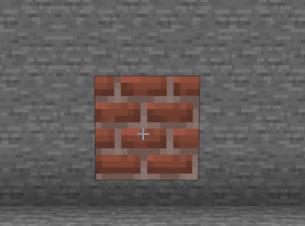
FactoryMod allows you to create small structures known as factories, made from a furnace, crafting table, and a chest. Factories allow for more complex recipes and items not found in vanilla minecraft. More efficient recipes than in vanilla minecraft (32 gold ore to 48 ingots, 64 cobble to 96 stone!). And cheaply available decorative blocks to make your builds nice.

There are plenty of other mechanics I haven't touched upon, like brewing alcohol for unique potion effects, how crops grow (or don't!) in certain biomes, the distribution of ores, or how you can see who broke into your home and stole all your crafting tables. See the wiki for more information on game mechanics! There are plenty of nations on the server, which I would recommend joining before trying to make your own. One of my personal favourites is the nation of Pavia, locted at (800, -3000)

Pavia is an elective meritocracy, comprising of a Prime Minister and his Cabinet, elected by the Nobility of Pavia. Pavia's territory is divided into distinct classes outlined by the foundational law of the country, the Magna Pavia. These classes administrate their own territories with varying states of autonomy and all add their own story to Pavia's ever-growing lore & history! Pavia is famous for its incredible and sprawling architecture as well as its economy, home to the largest Bank on CivMC and one of the server's most extensive shopping districts. There is a tutorial open to anyone to learn every guide and plugin which is located in the Pavia townhall, if you wish to use the server tutorial head to (+800 , -3065) inside the building on the ground floor. If you are new to CivMC, it is recommended you start off by settling in the Bedford Commons, a city just outside the capital's walls. The coordinates are (+1000, -2800).
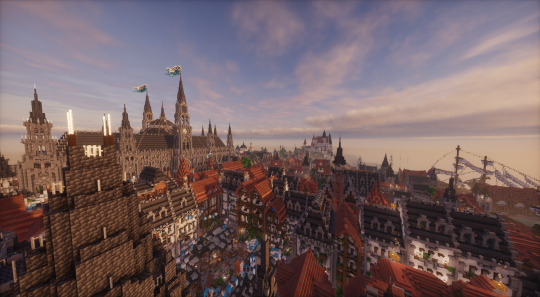

36 notes
·
View notes
Text
EP11KB: Industrial Storage Units (3t2)
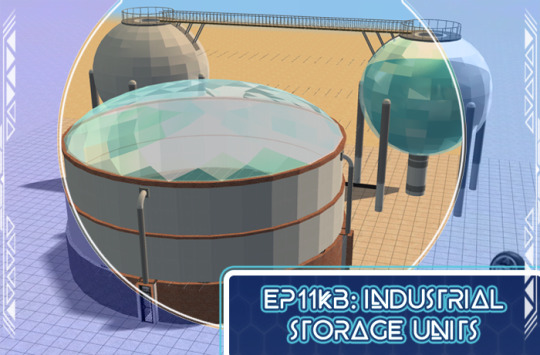
Published: 2-7-2024 | Updated: N/A SUMMARY “In need of a funkier, more futuristic skyline? The EP11 Kitbash Series (Simmons, 2022-2023) makes neighborhood assets from Sims 3: Into the Future (EA/Maxis, 2013) (and other EPs) available for Sims 2. Sets include single-tile shells and other items you’ll be able to plop on lots. Then, build above, below, in, and around them to create useable structures. Shell challenge anyone?” Here is a set of industrial storage containers from Oasis Landing (Sims 3: Into the Future, EA/Maxis, 2013) as decorative lot objects. They work well on industrial and/or factory lots and will go down with walls. The Storage Cylinder has space for up to four 1-tile doors and/or full-height windows. Otherwise, cover the openings!


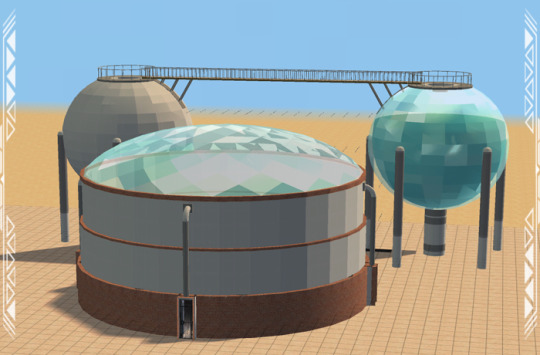
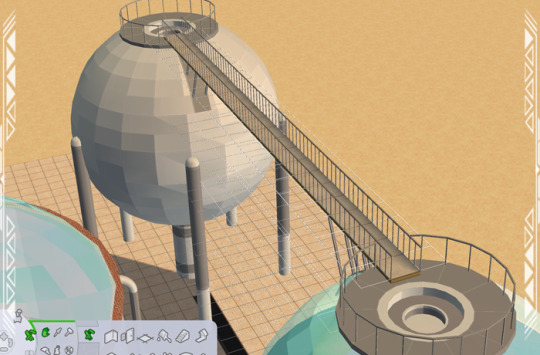
DETAILS Requires all EPs/SPs. Cost: §1100 | Build > Architecture Storage Sphere 001 and the “-RECOLOR” files are BOTH REQUIRED for recolors to work – this set includes 30 color options. You also need the BB_Niche1_Master (BuggyBooz, 2012) and Element TXTR Repository from the Repository Pack (Simmons, 2023). ITEMS Storage Cylinder (~23x23 Tiles) (3248 poly) 5-Story Storage Spheres 001 and 002 (3004 poly) - click on the BASE of Storage Sphere 1 to recolor it. Storage Filler Material (638 poly) – make sure it is facing in the same direction as Sphere 001 and placed on the same tile. **Poly counts are semi-high due to meshing issues but limiting placement to 1-2 per lot should minimize the risk of pink flashing. Mind your system settings! DOWNLOAD (choose one) from SFS | from MEGA BUILDING TIPS (suggested methods) Build an octagon (20 tiles across, 19 tiles front-to-back) with sides of alternating lengths of 6 and 7 tiles respectively. Going clockwise, the front side should be 7 tiles across, the next should be 6 tiles across…and so on.
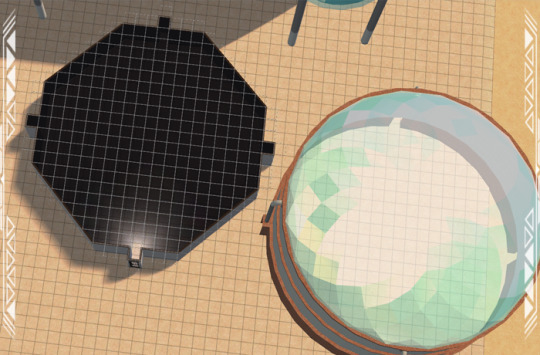

Once you’ve got 8 sides, add doors and/or windows to the center tile on the sides which are 7 tiles across. Use these entrances to get sims in and out of the building. Finally, place the Industrial Storage Cylinder on the tile directly in front of the front door/window. Add other details as needed.
For the Industrial Storage Spheres, you can build a functional catwalk between them. Place at least two, making sure the sides with the opening in the top gate and floor supports are facing one another.
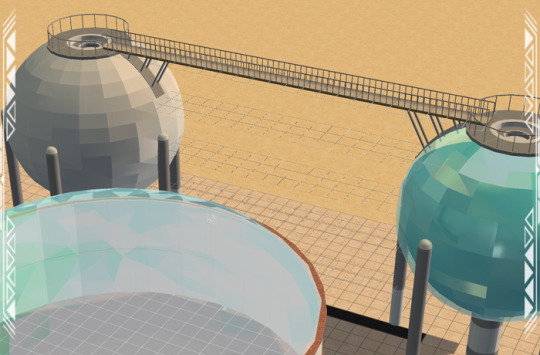

Using columns, walls, etc., build up to the sixth floor, then add floor tiles and fencing.
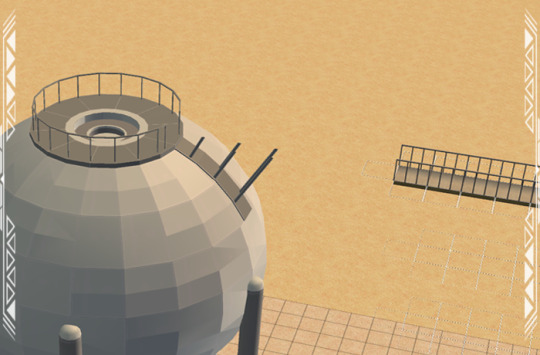

CREDITS Thanks: Simblr community. Repository Technique Tutorial (HugeLunatic, 2018), Sims 3 Object Cloner (Jones/Simlogical and Peter, 2013), Sims 3 Package Editor (Jones/Simlogical and Peter, 2014), S3PI Library (Peter), S3PE Plugin (Peter, 2020), TSR Workshop v2.2.119 (2023). Sources: BB_Niche1_Master (BuggyBooz, 2012), Beyno (Korn via BBFonts), Oasis Landing (The Sims 3: Into the Future) List of Community Lots (Summer’s Little Sims 3 Garden, 2014), Recolors-ACYL (CuriousB, 2010).
85 notes
·
View notes